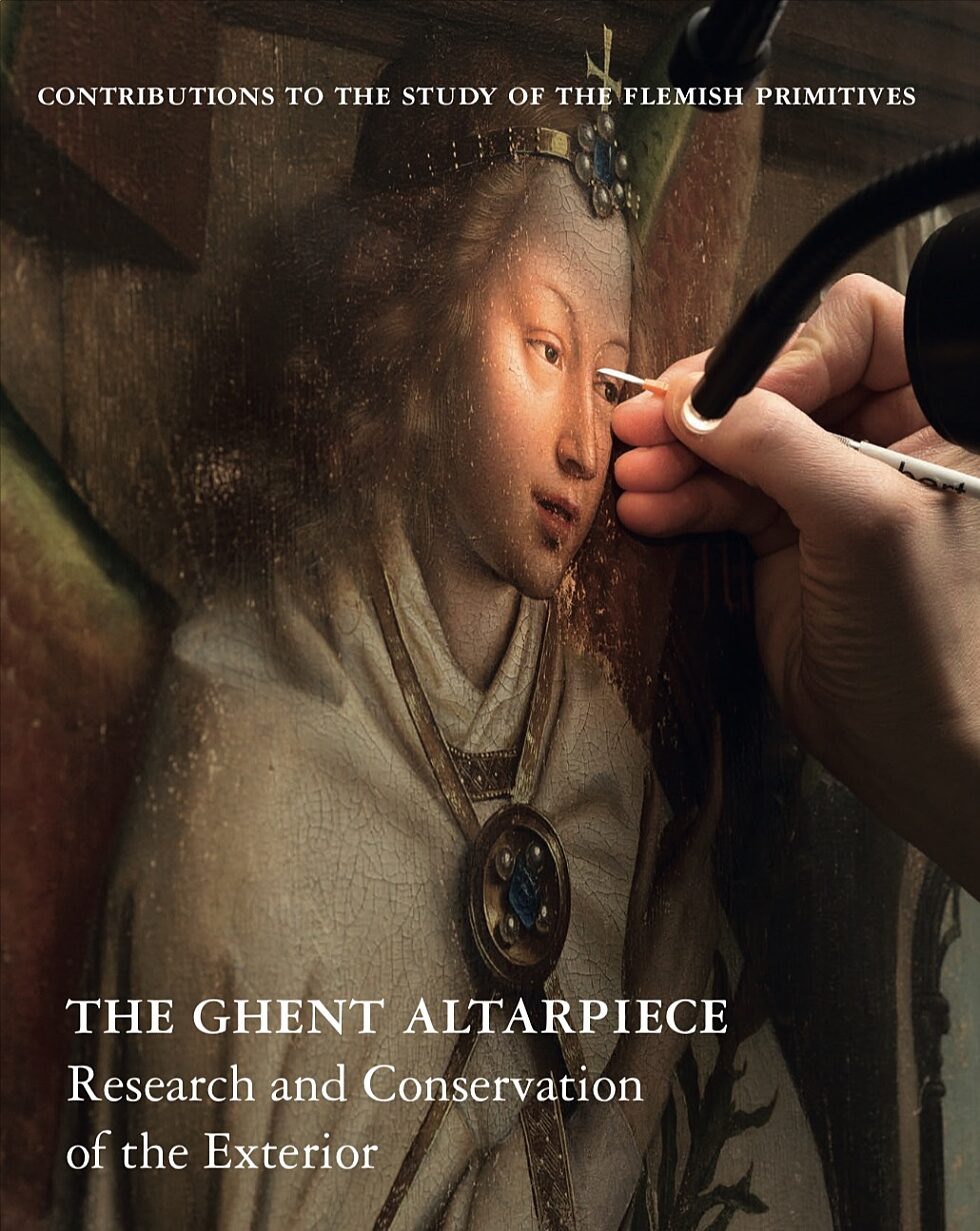Third phase Ghent Altarpiece: First results promise stunning outcome
Since May 2023, the third and final phase of the large-scale conservation-restoration campaign of the altarpiece of the Adoration of the Mystic Lamb by the Royal Institute for Cultural Heritage (KIK-IRPA) is ongoing. In recent months, the KIK-IRPA team have been removing non-original varnishes and have carried out a thorough examination of the paint layers underneath. Currently, following the advice of the international commission of experts, they have started removing 16th-century overpaints. Already the first results are breathtakingly beautiful.

The upper panels of the interior of the Ghent Altarpiece are being restored at the Museum of Fine Arts (MSK) in Ghent. Seven panels are being treated now: the three central panels with the enthroned figures of the Virgin Mary, the Deity and John the Baptist, and four side panels with the Singing Angels and Music-making Angels and Adam and Eve.
Discover the masterpiece in the finest detail on Closer to Van Eyck.
Observing every detail
First, an extensive documentation and research campaign began to fully document and examine each panel and its state of conservation. Sophisticated technologies were employed: from high-resolution photographs and close-up images, to scans with microscopes, to images obtained with ultraviolet, infrared and X-rays, allowing underlying layers to be captured in detail.
Varnish removal and examination of the paint layers
Then the KIK-IRPA team removed non-original varnish, which immediately resulted in a totally different appearance of the paintings, with its exceptionally fine details and subtle color nuances. The conservator-restorers studied each surface of the revealed paint layers under the microscope. They supplemented their observations with the results of scientific imaging, lab analyses, and documentation on the restoration history of the Ghent Altarpiece. From those meticulous studies, it was found that the upper panels of the Ghent Altarpiece are also in large parts covered with overpaints dating back to the 16th century.
Removal of old overpaints
Based on the convincing and promising results that emerged from the scientific research and test windows, the international experts gave, at the end of November 2023, a unanimously positive advice for removing the 16th-century overpaints and uncovering the original paint layers of the Van Eyck brothers, as was done during phases 1 and 2. The test windows proved that the original layers are in a relatively good state of preservation.
Currently the team have started removing 16th-century overpaints. The presence of old non-original varnish layers between the original and the overpaint makes safe removal of the overpaints technically possible. It is already evident that this third phase of the restoration, carried out under the eyes of the public at the MSK, will yield results as stunning as those of the previous phases, in which the exquisite details of the Van Eyck brothers' original paint layers were brought back to life.
Current results
The progressive removal of the thick, discolored varnish layers on the Adam and Eve panels has again revealed the extraordinary virtuosity of the Van Eyck brothers. The exceptionally fine details and subtle color nuances can now be fully admired, while the three-dimensionality of the figures becomes fully apparent. The nearly completed varnish removal on the press brocades of Mary, the Deity and John the Baptist already provides enormous gains at this stage of the treatment: the three monumental, central figures now stand out more sharply against the background and regain their volume and spatial presence. Moreover, the shimmer of the gold leaf can again be experienced and admired.
With the removal of the 16th-century overpaints on the singing and music-making angels and on the panels with John the Baptist, Mary and the Deity, the conservators recover the transparent layers, soft modulations and deep shadows so characteristic of the Van Eyck brothers. While uncovering the original paint layers of the cloaks on the central panels, which are heavily overpainted, the meticulous brushwork of the original folds is gradually revealed, and the original bright and intense colors resurface.
The removal of 16th-century overpaints will take many more months. The progress of the project is being followed closely by the international commission of experts. After overpaint removal, the conservator-restorers will meticulously retouch the old damages in the Van Eyck brothers' paint layers with reversible materials. At the end of the treatment, the seven panels will receive a new layer of varnish.


The Ghent Altarpiece
More KIK-IRPA news

Research on heritage paper bleaching presented at Icon Conference
At the end of October, Camille Jallu, paper conservator who graduated from ENSAV La Cambre, presented a poster at the Icon (Institute of Conservation) Book and Paper Group Conference "Conservation Uncovered: Investigation and Discovery in Treatment and Analysis" (The National Archives, Kew, London).

Additional funding for the third phase of the conservation of the Ghent Altarpiece
Flemish Ministers Ben Weyts (Immovable Heritage) and Caroline Gennez (Culture) announced additional funding from the Flemish Government for further work in the final phase of the conservation of the Ghent Altarpiece. The announcement was made during a visit to the conservation studio of the Ghent Altarpiece at the Museum of Fine Arts in Ghent.








